issue contents
August 2012 issue

Cover illustration: Structure of Aeropyrum pernix fibrillarin in complex with natively bound S-adenosyl-L-methionine at 1.7 Å resolution (de Silva et al., p. 854).
structural communications
Structural characterization of recombinant crustacyanin subunits from the lobster Homarus americanus
The two recombinant apo subunits H1 and H2 from H. americanus have been structurally characterized. Reconstitution studies with astaxanthin reproduced the bathochromic shift of 85–95 nm typical of the natural crustacyanin subunits.
PDB reference: 4alo
The crystal structure of A. pernix fibrillarin includes a tightly bound S-adenosyl-L-methionine molecule.
PDB reference: fibrillarin–S-adenosyl-L-methionine complex, 4df3
The structures of Pim1 kinase in complex with in silico screening hits and several subsequently optimized inhibitors, are reported.
The crystal structure of human Rack1 protein is reported at 2.45 Å resolution.
PDB reference: human Rack1, 4aow
Open  access
access
 access
accessThe anomalous dispersion signal of the bromine-containing kinase inhibitor H-89 was used to characterize discrete binding modes of the compound when complexed with the catalytic subunit of protein kinase A.
PDB reference: PKA–H-89 complex, 3vqh
The first structure of a fluorescent protein derived from A. victoria green fluorescent protein bearing the obligate-monomer mutation A206K is presented and shows no significant structural change in the vicinity of the fluorescent chromophore.
PDB reference: mTurquoise, 4ar7
The atomic structure of a new crystal form of the human histidine triad nucleotide-binding protein 1 (hHINT1)–AMP complex is reported at 1.38 Å resolution.
PDB reference: hHINT1–AMP complex, 3tw2
Crystal structures of Mn22+- and Co22+-substituted human arginase I complexed with an unreactive analog of substrate L-arginine are described at 1.82 and 1.90 Å resolution, respectively.
crystallization communications
The ribosome-dependent mRNA interferase YafO from Escherichia coli belongs to a type II toxin–antitoxin (TA) system and its cognate antitoxin YafN neutralizes cell toxicity by forming a stable YafN–YafO complex. Here, the YafN–YafO complex has been expressed and crystallized.
The last step in the biosynthetic pathway of 4-methoxy-2,2′-bipyrrole-5-carbaldehyde (MBC) is catalyzed by PigF, which transfers a methyl group to 4-hydroxy-2,2′-bipyrrole-5-carbaldehyde (HBC) to form the terminal product MBC, but its catalytic mechanism is not known. To elucidate its mechanism, recombinant PigF was purified and crystallized.
Crystals of apo and SeMet ferric uptake regulator from the magnetotactic bacterium M. gryphiswaldense MSR-1 were obtained and optimized to obtain high-quality diffraction data. Diffraction data sets were collected and processed at 1.58 and 1.9 Å resolution, respectively.
Crystals of native and selenomethionine-labelled STING138–344 protein from M. musculus diffracted to resolutions of 2.39 and 2.2 Å, respectively
A novel type of phosphoserine phosphatase from H. thermophilus TK-6 was heterologously expressed in E. coli, purified and crystallized by the sitting-drop vapour-diffusion method. The crystals obtained belonged to space group P212121 and diffracted X-rays to 1.5 Å resolution.
Xylosidase C from Thermoanaerobacterium saccharolyticum, the first enzyme classified as GH120 family, has been successfully crystallized. The crystal diffracted to a resolution of 2.2 Å.
The receiver domain of a putative response regulator from B. pseudomallei, BPSL0128, has been crystallized in a form suitable for X-ray analysis.
A putative lipase, LipS, from the soil metagenome of an environmental sample taken at the Biocenter Klein Flottbek, Hamburg, Germany was cloned, expressed and purified. Two different constructs of the protein were crystallized in a search for well diffracting crystals. Preliminary X-ray analyses indicated that crystals in space groups P42212 and P4 diffracted X-ray radiation to 2.8 and 2.0 Å resolution, respectively.
The C-terminal domain of the cation diffusion facilitator MamM has been successfully constructed, purified and crystallized. Diffraction data was collected to to a resolution of 2.0 Å.
Crystals of a new peroxidase, named banyan peroxidase, from the latex of F. benghalensis belonged to the trigonal space group P3221 and provided X-ray diffraction data to a resolution of 1.66 Å. The anomalous signal of the intrinsic iron and calcium ions was sufficent for phasing by SAD.
Two myotoxic and noncatalytic Lys49-phospholipases A2 (braziliantoxin-II and MT-II) and a myotoxic and catalytic phospholipase A2 (braziliantoxin-III) from B. brazili were crystallized. X-ray diffraction data sets were collected and molecular-replacement solutions were obtained.
Open  access
access
 access
accessAs-p18, an unusual fatty-acid-binding protein from a parasitic nematode, was expressed in bacteria, purified and crystallized. The use of a microfocus beamline was essential for data collection.
Nectin-4 belongs to a family of immunoglobulin-like cell adhesion molecules and is highly expressed in cancer cells. Recently, nectin-4 was found to be a receptor of measles virus and the IgV domain sustains strong binding to measles virus H protein. In this study, the successful expression and purification of human nectin-4 V domain (nectin-4v) is reported
The DNA-binding domain of AdpA, the central transcription factor in the A-factor regulatory cascade in the filamentous bacterium S. griseus, was heterologously expressed, purified and crystallized in complex with a duplex DNA by the sitting-drop vapour-diffusion method. The best crystal diffracted X-rays to 2.8 Å resolution and belonged to space group C2221.
The therapeutic antibody MORAb-009 disrupts the interaction of mesothelin and the ovarian cancer antigen CA-125. Crystals have been grown of the Fab fragment derived from MORAb-009 and of its complex with an N-terminal fragment of mesothelin.
The Escherichia coli PapD-like protein (EcpD), from uropathogenic Escherichia coli (UPEC), which is a periplasmic chaperon of Yad fimbriae was cloned, overexpressed, purified and crystallized. The crystals obtained diffracted X-rays to 1.67 Å resolution and belonged to space group C2221.
asHPAL, a member of the HpaI/HpcH subfamily of class II aldolases, was expressed, purified and crystallized in the absence and presence of 2-ketobutyrate as one of its substrates using the sitting-drop vapour-diffusion method. asHPAL crystals grown without and with 2-ketobutyrate diffracted to 1.60 and 1.55 Å resolution, respectively.
Crystallization of human REV1–REV7–REV3 ternary complex involved in translesion DNA synthesis.
The purification and crystallization of the D. melanogaster lysosomal α-mannosidase is reported. The plate-like crystals belonged to the orthorhombic space group P212121 and diffracted to 3.5 Å resolution.
Crystals of Pac17, an enzyme from the pacidamycin-biosynthetic cluster of S. coeruleorubidus, were obtained and native X-ray data were recorded to a maximum resolution of 1.9 Å.
Trigonal crystals of FadR from B. halodurans have been obtained. X-ray data were collected to 2.05 Å resolution using synchrotron radiation.
The crystallization and preliminary X-ray diffraction analysis of glyceraldehyde-3-phosphate dehydrogenase 3 from S. cerevisiae is reported.
laboratory communications
A successful MAD experiment has been conducted at the Pr LIII edge on HZB beamline BL14.2.
Crystallization of the complex of the transcription factor AmrZ with DNA was accomplished through the combination of established and newly developed methods. Here, a general method to obtain and optimize crystals of protein–DNA complexes consisting of these combined procedures is described.
A device has been developed to optimize crystal-growth conditions by experiments in a single drop.


 journal menu
journal menu











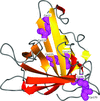



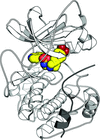












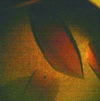

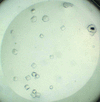






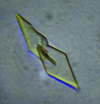







![[publBio]](/logos/publbio.gif)





